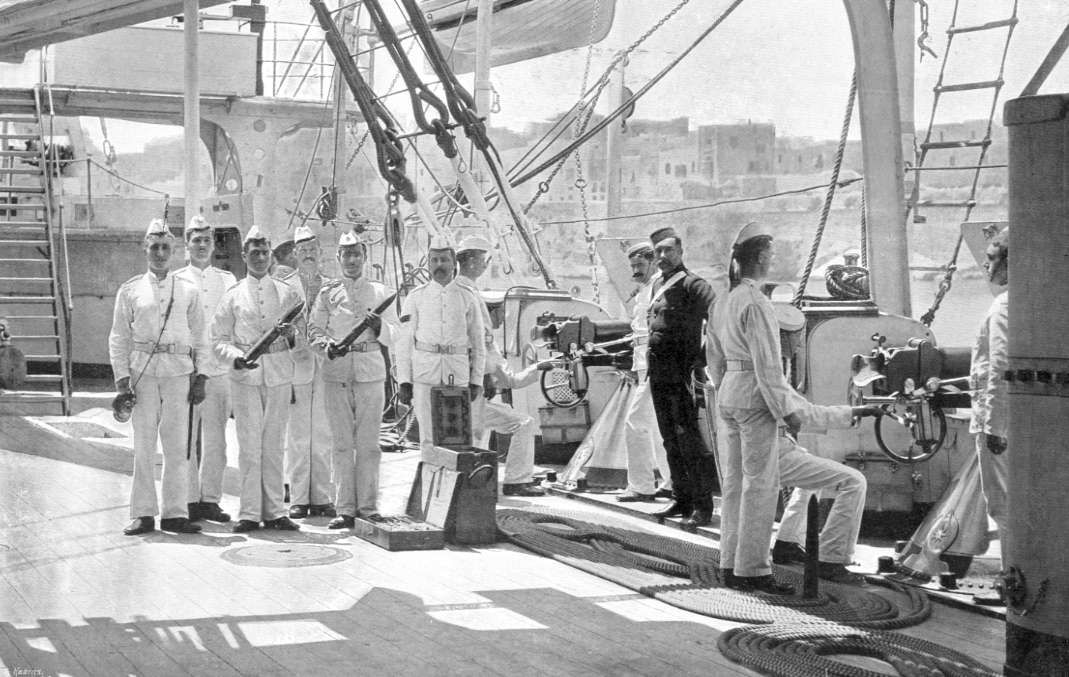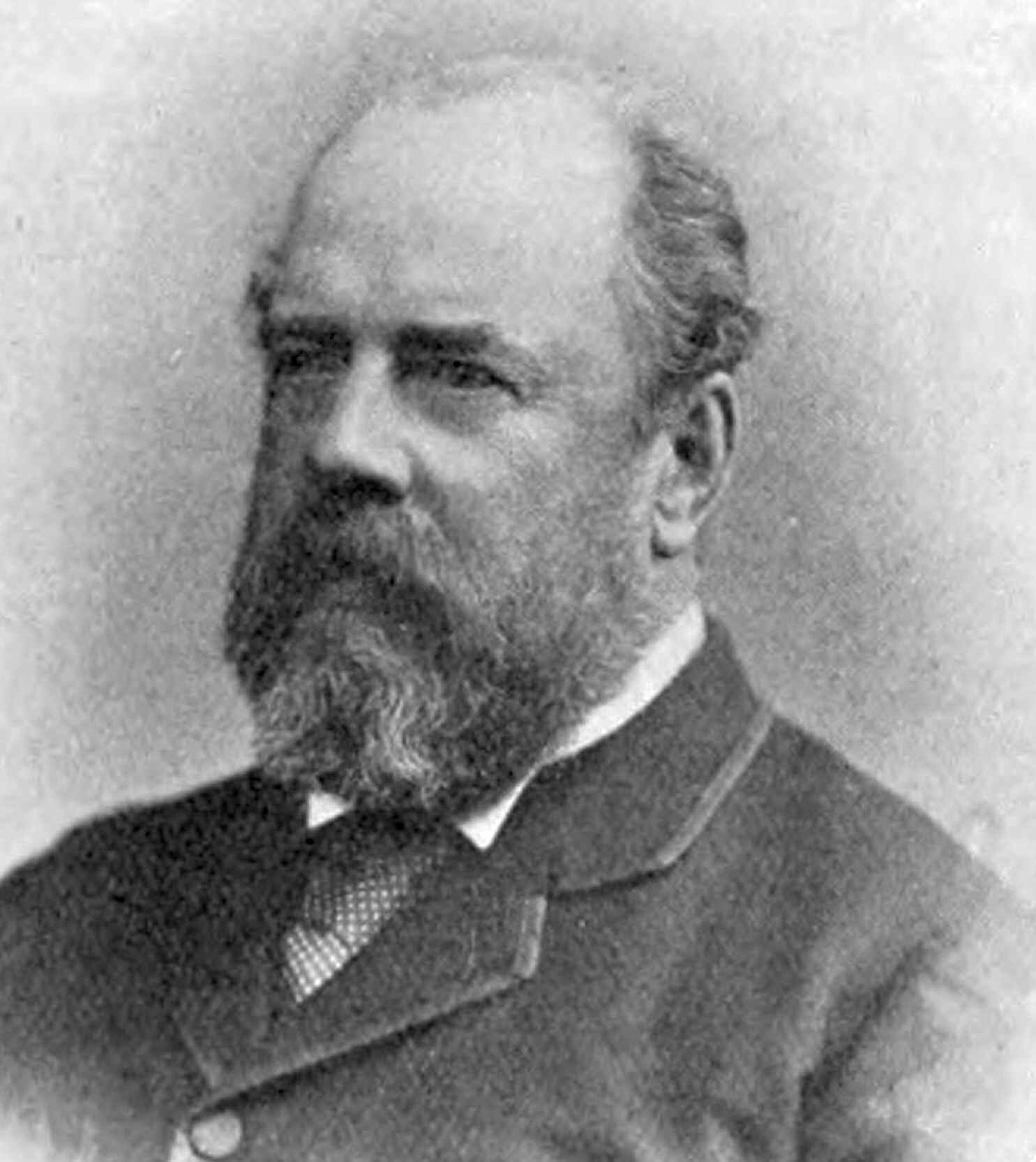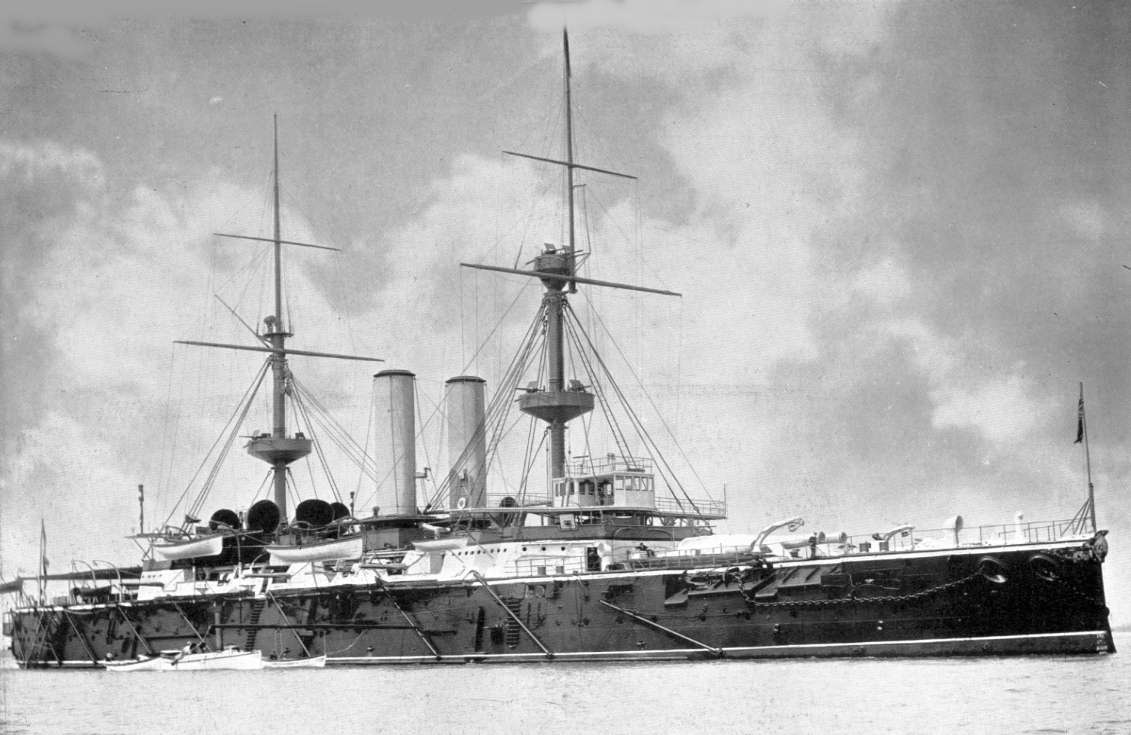|
John Harper Narbeth
John Harper Narbeth, CB, CBE, MVO (26 May 1863 – 19 May 1944) was a British naval architect of the Royal Corps of Naval Constructors, the body responsible for the design of Royal Navy warships. The design of the dreadnought battleships has been attributed to him, and he played a leading part in the design and construction of the first generation of aircraft carriers. Background and early career Born at Pembroke Dock on 26 May 1863, he was one of the nine children of John Harper Narbeth (himself the son of another of that name) and his wife Ann Griffiths. The father, described as “a man of sterling worth of character and intellectual acumen”, was a cost accountant in Pembroke Royal Dockyard, and in 1877 the son followed him into that establishment as an apprentice shipwright. The yard had just been assessed by the United States Navy’s Chief Constructor to be “the finest shipbuilding yard in the world”, and during his apprenticeship the younger Narbeth gained expe ... [...More Info...] [...Related Items...] OR: [Wikipedia] [Google] [Baidu] |
Order Of The Bath
The Most Honourable Order of the Bath is a British order of chivalry founded by George I of Great Britain, George I on 18 May 1725. The name derives from the elaborate medieval ceremony for appointing a knight, which involved Bathing#Medieval and early-modern Europe, bathing (as a symbol of purification) as one of its elements. The knights so created were known as "Knights of the Bath". George I "erected the Knights of the Bath into a regular Order (honour), Military Order". He did not (as is commonly believed) revive the Order of the Bath, since it had never previously existed as an Order, in the sense of a body of knights who were governed by a set of Statute, statutes and whose numbers were replenished when vacancies occurred. The Order consists of the Sovereign (currently Charles III, King Charles III), the :Great Masters of the Order of the Bath, Great Master (currently vacant) and three Classes of members: *Knight Grand Cross (:Knights Grand Cross of the Order of the Bath ... [...More Info...] [...Related Items...] OR: [Wikipedia] [Google] [Baidu] |
HMS Camperdown (1885)
HMS ''Camperdown'' was an of the Royal Navy, named after Adam Duncan, 1st Viscount Duncan of Camperdown. Design She was a full sister to , and was an improved version of the earlier and . In comparison to these earlier ships, she had an increased thickness of barbette armour, and a lengthened armour belt. The extra armour carried increased the displacement by ; in order not to increase the draught, she was lengthened by and was given more beam. The guns were carried in two pairs, in barbettes positioned on the centre-line at either end of the superstructure. They were carried at a height of above the full-load water-line, and possessed firing arcs of some 270°. Each shell weighed , and would penetrate of iron at a range of . History ''Camperdown'' was commissioned at Portsmouth on 18 July 1889, and initially went into reserve. In December 1889 she was posted to the Mediterranean Fleet as flagship, where she remained until being posted as flagship of the Channel ... [...More Info...] [...Related Items...] OR: [Wikipedia] [Google] [Baidu] |
King Edward VII-class Battleship
The ''King Edward VII'' class was a class of eight pre-dreadnought battleships launched by the Royal Navy between 1903 and 1905. The class comprised , the lead ship, , , , , , , and . They marked the first major development of the basic pre-dreadnought type that had been developed with the type of the mid-1890s, all of which had been designed by the Director of Naval Construction, William Henry White, with the primary innovation being the adoption of a heavy secondary battery of four guns to supplement the standard main battery of four guns. The ''King Edward VII''s were among the last pre-dreadnoughts built for the Royal Navy before the construction and launch of the revolutionary battleship HMS ''Dreadnought'' in 1906, which immediately rendered them obsolescent. The ships served with the Atlantic Fleet from 1905 to 1907, when they were transferred to the Channel Fleet, though this service lasted only until 1908–1909, when they were reassigned to the Home Fleet. Dur ... [...More Info...] [...Related Items...] OR: [Wikipedia] [Google] [Baidu] |
St George’s Hospital
St George's Hospital is a large teaching hospital in Tooting, London. Founded in 1733, it is one of the UK's largest teaching hospitals and one of the largest hospitals in Europe. It is run by the St George's University Hospitals NHS Foundation Trust. It shares its main hospital site in Tooting in the London Borough of Wandsworth, with St George's, University of London, which trains NHS staff and carries out advanced medical research. The hospital has around 1,300 beds and most general tertiary care such as accident and emergency, maternity services and care for older people and children. However, as a major acute hospital, St George's Hospital also offers specialist care for the more complex injuries and illnesses, including trauma, neurology, cardiac care, renal transplantation, cancer care and stroke. It is also home to one of four major trauma centres and one of eight hyper-acute stroke units for London. St George's Hospital also provides care for patients from a lar ... [...More Info...] [...Related Items...] OR: [Wikipedia] [Google] [Baidu] |
Death And State Funeral Of Queen Victoria
The state funeral of Victoria, Queen of the United Kingdom of Great Britain and Ireland, Empress of India, occurred on 2 February 1901, after her death on 22 January. It was one of the largest gatherings of European royalty. Description In 1897, Victoria had written instructions for her funeral, which was to be military as befitting a soldier's daughter and the head of the army, and feature white dress instead of black. On 25 January, her body was lifted into the coffin by her sons Edward VII and Prince Arthur, Duke of Connaught, and her grandson the German Emperor Wilhelm II. She was dressed in a white dress and her wedding veil. An array of mementos commemorating her extended family, friends and servants were laid in the coffin with her, at her request, by her doctor and dressers. A dressing gown that had belonged to her husband Albert who had died 40 years earlier, was placed by her side, along with a plaster cast of his hand, while a lock of John Brown's hair, along wi ... [...More Info...] [...Related Items...] OR: [Wikipedia] [Google] [Baidu] |
HMY Victoria And Albert (1899)
HMY ''Victoria and Albert'' was a royal yacht of the Royal Navy of the United Kingdom. The yacht was designed by the Chief Constructor of the Royal Navy Sir William White, launched in 1899 and ready for service in 1901. This was the third yacht to be named ''Victoria and Albert'' and she was fitted with steam engines fired by Belleville water-tube boilers. She served four sovereigns, and was decommissioned as royal yacht in 1939, served in the Second World War, and was broken up in 1954. Background and Construction Queen Victoria had lobbied Parliament for many years for a more modern yacht – dated from 1855 – and winning this expenditure after pointing out that both the Russian Tsar and the German Kaiser had larger and more modern yachts than Great Britain. The yacht was launched at Pembroke Dockyard 9 May 1899 by the Duchess of York. She was completed in the summer 1901, seven months after the death of Queen Victoria. The total cost of the ship was £572,000, five-se ... [...More Info...] [...Related Items...] OR: [Wikipedia] [Google] [Baidu] |
Royal Yacht
A royal yacht is a ship used by a monarch or a royal family. If the monarch is an emperor the proper term is imperial yacht. Most of them are financed by the government of the country of which the monarch is head. The royal yacht is most often crewed by personnel from the navy and used by the monarch and his/her family on both private and official travels. Types of vessels used Some royal yachts have been/are small vessels only used for short trips on rivers or in calm waters, but others have been/are large seaworthy ships. History Depending on how the term is defined royal yachts date back to the days of antiquity with royal barges on the Nile in ancient Egypt. Later the Vikings produced royal vessels. They followed the pattern of longships although highly decorated and fitted with purple sails (purple sails remained standard for royal vessels the next 400 years). In England, Henry V sold off the royal yachts to clear the Crown's debts. The next royal vessels in England were ... [...More Info...] [...Related Items...] OR: [Wikipedia] [Google] [Baidu] |
Royal Institution Of Naval Architects
The Royal Institution of Naval Architects (also known as RINA) is an international organisation representing naval architects. It is an elite international professional institution based in London. Its members are involved worldwide at all levels in the design, construction, repair and operation of ships, boats and marine structures. Members are elected by the council and are presented with the titles AssocRINA (Associate), AMRINA (Associate Member), MRINA (Member) and FRINA (Fellow) depending on their membership type. These title are usually suffixed after the name of the member. The Patron of the Institution is Queen Elizabeth II. History The Royal Institution of Naval Architects was founded in Britain in 1860 as The Institution of Naval Architects and incorporated by Royal Charter in 1910 and 1960 to "advance the art and science of ship design". Founding members included John Scott Russell, Edward Reed, Rev Joseph Woolley, Nathaniel Barnaby, Frederick Kynaston Barnes and ... [...More Info...] [...Related Items...] OR: [Wikipedia] [Google] [Baidu] |
Sinking Of HMS Victoria
The sinking of HMS ''Victoria'' took place at approximately 15:30 on 22 June 1893, after , the flagship of the Royal Navy's Mediterranean Fleet, collided with while on fleet manoeuvres in the Eastern Mediterranean. The collision caused significant damage to ''Victoria''s bow, with a large hole produced causing the ship to rapidly capsize. ''Victoria'' took approximately fifteen minutes to sink, with 358 members of the crew, including Vice-Admiral Sir George Tryon, lost in the disaster. Background In 1893, the Royal Navy saw the Mediterranean Sea as a vital sea route between Britain and India, under constant threat from the navies of France and Italy. The impressive naval force that the British concentrated to protect these sealanes made Mediterranean Fleet one of the most powerful in the world. On 22 June 1893, the bulk of the fleet, eleven ironclads (eight battleships and three large cruisers), were on their annual summer exercises off Tripoli in the Ottoman Empire (now L ... [...More Info...] [...Related Items...] OR: [Wikipedia] [Google] [Baidu] |
Majestic-class Battleship
The ''Majestic'' class of nine pre-dreadnought battleships were built for the Royal Navy in the mid-1890s under the Spencer Programme, named after the First Lord of the Admiralty, John Poyntz Spencer. With nine units commissioned, they were the most numerous class of battleships. The nine ships, , , , , , , , , and , were built between 1894 and 1898 as part of a programme to strengthen the Royal Navy versus its two traditional rivals, France and Russia. This continued the naval re-armament initiatives begun by the Naval Defence Act 1889. The ''Majestic''s introduced a number of significant improvements to British battleship design, including armoured gun shields for the barbette-mounted main battery guns. The ships were armed with a main battery of four BL 12-inch Mark VIII guns, the first large-calibre weapon in the Royal Navy to use smokeless propellant, which made it superior in almost all respects to earlier, larger guns. They were also the first British ships to inc ... [...More Info...] [...Related Items...] OR: [Wikipedia] [Google] [Baidu] |
Apollo-class Cruiser
The ''Apollo'' class were second-class protected cruisers designed by Sir William White and built for the Royal Navy in the late 19th century. Twenty-one ships of this class were built, making it the largest single class of steel cruisers ever built for the Royal Navy to the same design. Design and construction The design followed White's standard pattern for smaller steel cruisers, being of protected type (with an internal curved steel armour deck protecting the machinery spaces) and featuring low freeboard amidships with raised bulwarks connecting the forecastle and poop for weatherliness. It drew heavily from the slightly earlier ''Medea'', but with enlarged dimensions and a revised armament which, for the first time in Royal Navy 2nd-class cruisers, included the new 4.7-inch quick-firing gun. Six of these were carried; three on each side of the main deck. Two 6-inch guns were carried on the centreline, one at either end of the ship upon the forecastle and the poop. Ten s ... [...More Info...] [...Related Items...] OR: [Wikipedia] [Google] [Baidu] |




_2017-08-16.jpg)


